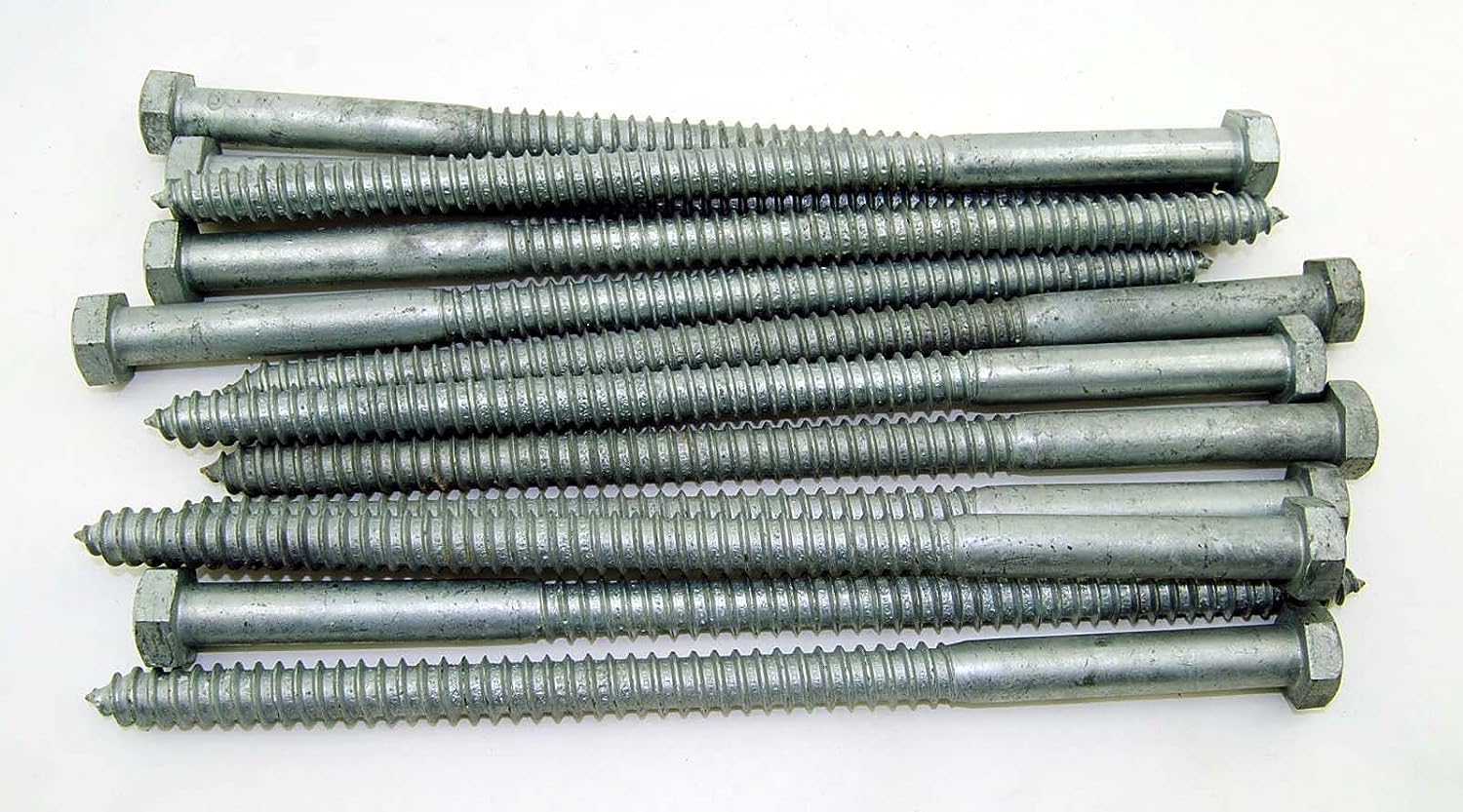A lag bolt is one of the most robust construction fasteners. They are a popular choice for connecting lumber and materials that will bear heavy loads.
Technically, lag bolts are considered screws rather than bolts as they don’t require a nut to hold them in place. However, they are often referred to as bolts because of their hex head.
Fastening Materials
Lag bolts, sometimes also known as lag screws, are large fasteners that can handle high-load connections. They are typically used to lag lumber framing, lag machinery feet to wood floors and in other heavy carpentry applications. Lag bolts feature a sharp gimlet point and coarse threads that maximize holding power in wood. They are available in both zinc plated steel and stainless steel to match the needs of various projects.
Lag bolts require a pre-drilled hole for easy insertion and faster fastening. They are usually tightened using a wrench or socket. When working with lag bolts, it is important to move slowly and carefully to prevent over-tightening. Over-tightening can cause the bolt to break off inside the material, causing a significant headache and potential damage. It is also important to use a spade drill bit to create countersink holes for the bolt heads so that they do not protrude from the surface of the material.
Preparation
Lag bolts are large screws designed for heavy-duty applications. They are used to fasten materials like wood and concrete. Before installing lag bolts, it’s important to prepare the material and drill a hole for the bolt. This will ensure that the bolt is properly installed and will provide the necessary strength for the application.
To make a lag bolt, steel round bar is heated and then upset to create the desired shape, which is usually hex or square. The heads of lag bolts are forged to give them the proper head markings. They are also galvanized to protect against corrosion.
Lag bolts are prone to shearing, which can be a problem when driving them into a wall. One way to prevent this is to use a small ratchet for driving the bolt. Another is to use only a couple of fingers on the handle, instead of a full grip. This will reduce the force required to drive the bolt and prevent it from shearing.
Drilling
Lag bolts (also known as lag screws) are a type of screw that can join larger pieces of lumber semi-permanently. Lag bolts are thicker and longer than ordinary screws, and their size makes them ideal for heavy-duty applications. Unlike standard wood screws, they don’t require nuts and work by burrowing into the material with course threads. Lag bolts are also more durable than other types of fasteners and can hold up to a greater amount of pressure.
When working with lag bolts, it’s important to pre-drill the hole you plan on using for the bolt. This step is necessary to avoid damaging the stud or splitting it due to the bolt’s large diameter. It’s generally a good idea to use a drill bit that matches the shank size of your bolt.
Next, it’s time to create a countersink hole. To do this, you’ll want to use a big spade drill bit to create a depression that’s a little bigger than the head of your lag bolt. This step is essential, as it will allow you to fasten the lag bolts flush with your materials.
Tightening
Lag bolts, also known as lag screws, are some of the toughest fasteners available. They are used to connect heavy lumber and other materials that can bear intense loads. Unlike wood screws and sheet metal screws, which have multiple head types, lag screws are only available with hex heads. They require a ratchet or a nut driver to install and tighten them.
While they may seem like a hassle to use, a single 1/4 lag screw directly into a stud will hold most modern flat TV mounts without issue. From a strength perspective, a proper sized pilot hole and not over tightening are more important than the specific type of bolt.
In the case of lag screw timber joints, researchers have shown that the tightening speed has an impact on the friction coefficient and clamp force. This shows that it might be possible to create a torque control method for lag screw timber connections, similar to those for metallic bolts.


